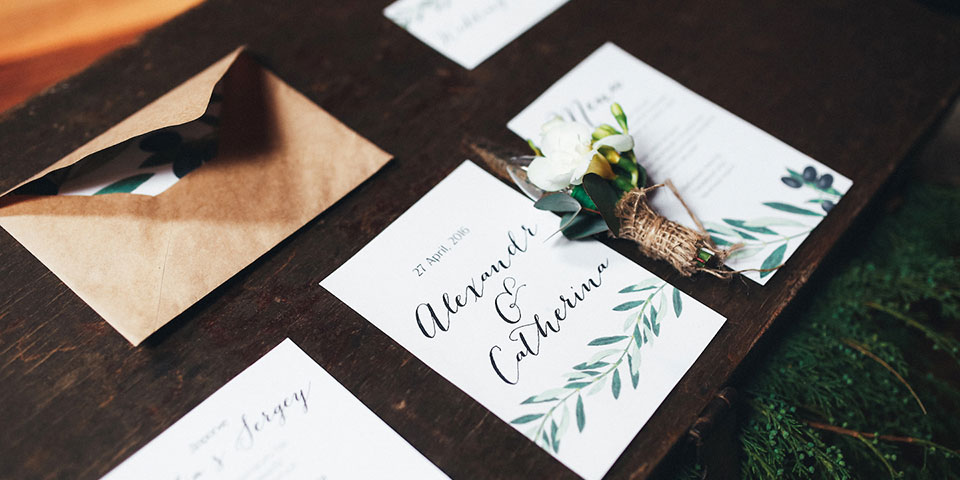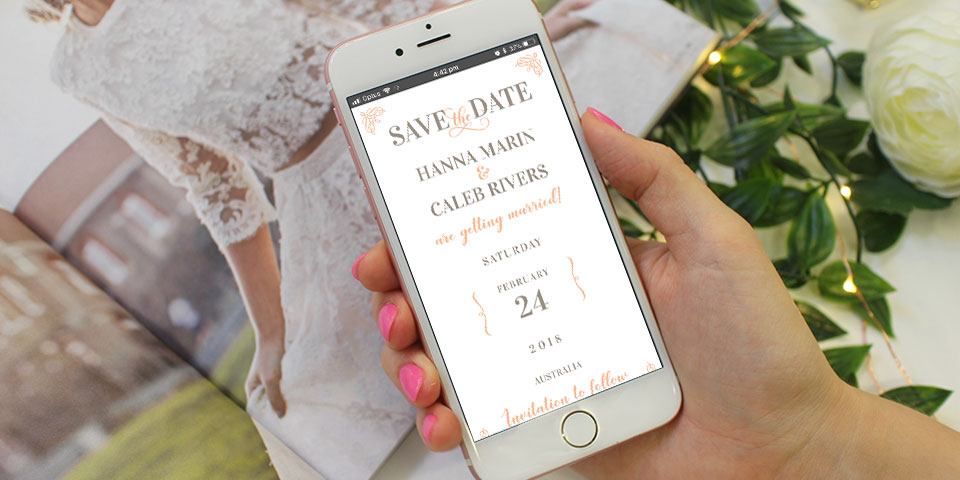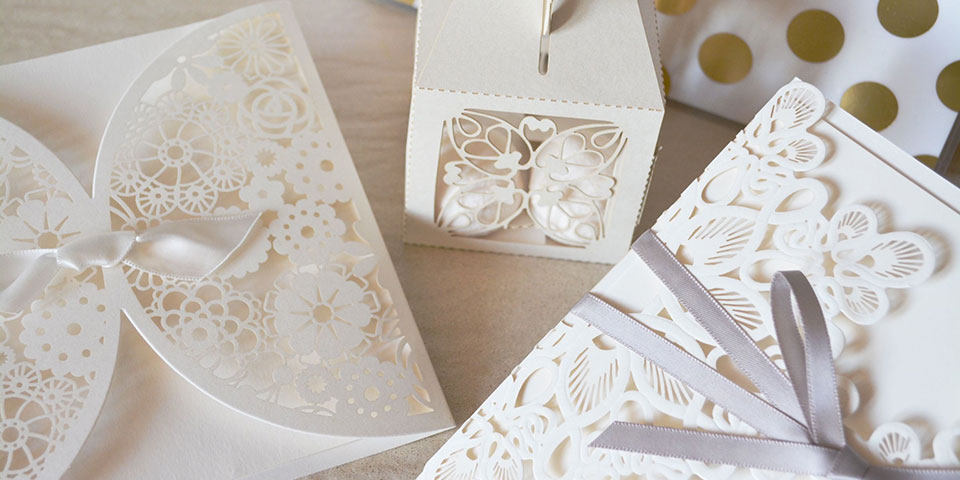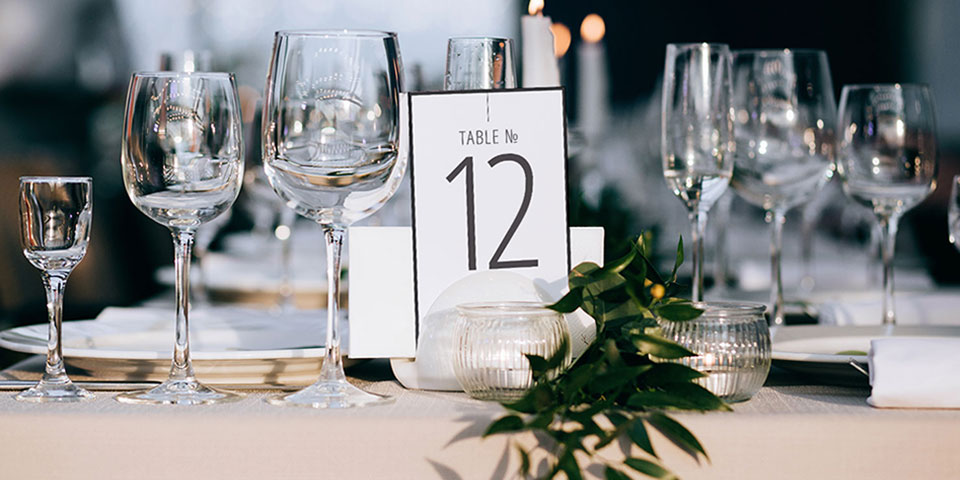When it comes to planning your wedding, sending out your invitations is always going to be a major goosebumps moment.
Once those invitations are sent, everything becomes real! It’s no longer just you and your partner in your own little bubble of excitement. Now, all of your guests can start to share in the excitement with you too!
Your wedding invitations are actually one of the most important elements of your day. It might seem like a small detail in the scheme of things, but your invitation is essentially the very first point of contact you have with your guests. It will set the tone for the entire wedding, whether it’s a black-tie affair or a backyard gathering.
Most importantly, it also contains all of the crucial information your guests will need to make sure they get to your wedding on time, in the right location, and prepared for whatever the night will bring!
So before you even think about putting pen to paper, it’s important to take some time to really consider your wedding invitation etiquette. Check out our helpful tips below to make sure you craft up the perfect invitation for your dream day!
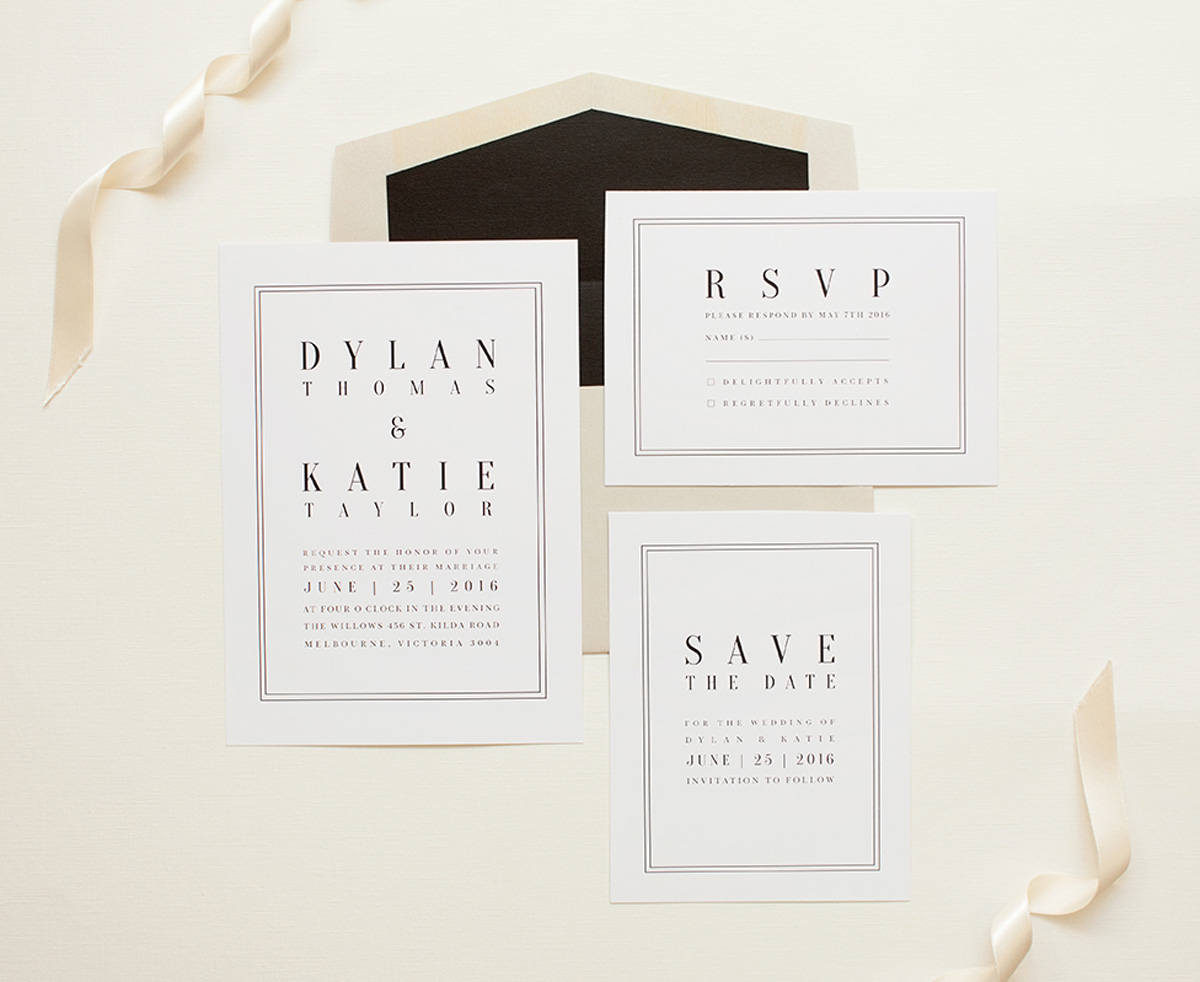
What to include
First things first, let’s talk about the information that you should definitely include in your wedding invitations.
No matter how pretty your invitations might look, your number one priority should be making sure all of the vital details are outlined clearly.
The main purpose of your invitation is to have your guests mark off the date in their calendars, make the necessary arrangements and dress appropriately. It’s crucial that your invitation covers the essential W’s: Who, What, Where and When.
1. Who
Okay, so maybe it’s a no brainer, but your wedding invitations should obviously include the names of the bride and groom (that’s you!). Make sure you include your surnames to avoid any confusion.
When it comes to addressing your guests, it’s up to you whether you include surnames, titles or nicknames (we’ll go into wording in more detail below!). For couples who are married or in a long-term relationship, make sure you address the invitation to both guests.
Here’s where the ‘who’ can get a little tricky – navigating the issue of plus-ones or children. If you are allowing plus-ones for certain guests then make sure you clearly outline this on the invitation. A simple note of “and guest” after their name is the easiest way to clarify this. Guests that don’t have a specific note after their name will generally understand and appreciate that their invitation is for them alone.
When it comes to children, some parents may automatically assume that kids are welcome unless you specifically mention otherwise. Because it only applies to a certain number of guests, don’t feel like you need to make a sweeping statement of ‘no kids allowed’ across all invitations! It might come across as offensive and it’s probably irrelevant to the majority of your guests anyway.
Instead, chat to any parents in advance either in person or over the phone to let them know whether the wedding is going to be suitable for their little ones or not. They’ll definitely appreciate that you’ve taken the courtesy to let them know!
2. Where
Unless you want guests rocking up to your ceremony 20 minutes late because of an incorrect address, make sure you clearly outline where the wedding is going to be held!
Include the address of your ceremony first. If the reception is happening at the same location then you can simply state “reception to follow”.
If your ceremony and reception locations are different, make sure you give the address of both locations. Your guests will also need a heads up as to whether transport between locations has been organised, or if they are required to make their own arrangements.
For venues that might be off the beaten track or a little trickier to find, directions to the location might also be helpful and appreciated by your guests. This is where creating a wedding website can really come in handy, to provide additional directions, maps and venue information for your guests without taking up precious space on your invitations.
And don’t forget to check for any typos! The wrong street number or a misspelled venue name can really cause havoc for guests who might be dependant on their GPS to lead them to your wedding.

3. When
Outlining the correct timings for your guests on your wedding invitations will be crucial to the logistics of your day.
When it comes to specifying an arrival time for your guests, it’s generally recommended to have them present at the ceremony venue around 30 minutes prior to you walking down the aisle. This will allow enough time for elderly guests to get seated and comfortable and the groom to welcome and greet everyone. It should also cover any last minute mishaps like traffic delays, or those guests who may be notorious for running late!
Along with the arrival time, your invitation should also specify what time the event is going to conclude. Because of noise restrictions and staffing, most venues are generally quite strict on ushering guests out of the venue by a certain time. Give your guest a heads up on exactly when things will be wrapping up, so that they can organise transport to get them home safely.
Along with the timings for the day itself, you’ll also need to include an RSVP date on your invitation for guests to confirm or decline their attendance. If you don’t specify your RSVP date then you might be setting yourself up for last minute surprise attendees!
Don’t forget that you’ll need to confirm your final guest numbers with your caterer between 2 – 3 weeks out from your day, so make sure your RSVP is aligned with this timeframe. You might want to include an RSVP card for guests to return to you, or direct them to your wedding website to confirm their attendance.
4. What
Attending a wedding requires preparation, so give your guests a clear indication on what they should be expecting for your big day. There is nothing worse than feeling either over or underdressed at a wedding, so make this obvious to your guests at the very beginning through your invitation!
Are you hosting a glamorous, five-course degustation dinner in a private ballroom? You should definitely specify that the dress code is strictly black-tie. On the flipside, if you’re planning a super casual picnic in the park then let guests know to dress low-key and comfortable.
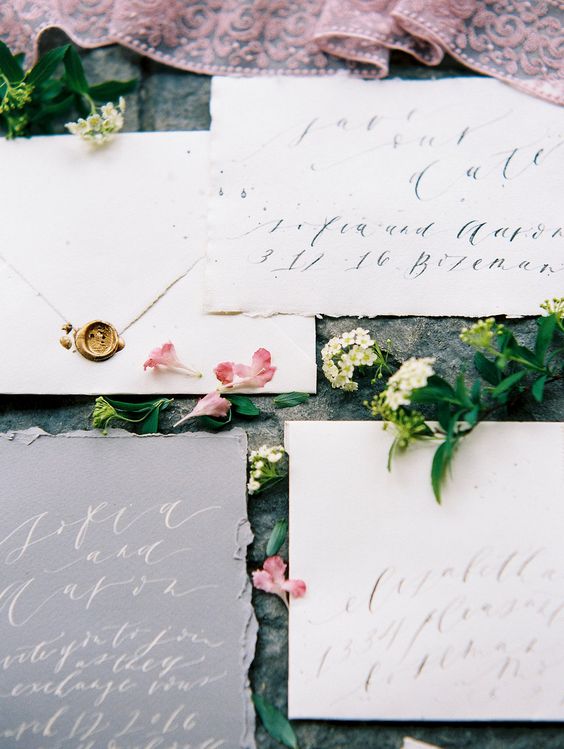
Stationery: Cast and Company
Optional inclusions
There might be some additional details you’d like to include on your wedding invitations that aren’t specifically related to the who, what, where and when.
Are your parents or family members contributing financially to the wedding? If so, it’s traditional to acknowledge them on your wedding invitations as a thank you. This could be a formal acknowledgement like “Mr & Mrs X and Mr & Mrs Y request your presence at the wedding of their children….” or even something as simple as “together with their families” preceding your names.
If you have created a hashtag for the wedding, this can be an optional inclusion on your wedding invitations too. It means your guests can start using the hashtag for any events happening in the lead up to your day like engagement parties, hens nights or even dress shopping.
Dietary requirements are another detail that you’ll need to confirm with your guests prior to your big day, so you may want to mention this on your invites. You can give guests the option to note any dietary requirements on your RSVP cards, or direct them to your wedding website.
When it comes to details you might not want to include, the method of gift giving is one detail you should definitely leave unsaid. You may have organised a gift registry or plan on including a wishing well at the venue, but it’s generally not appropriate to outline this on your wedding invitation! Make a note of the details discreetly on your wedding website instead, or get your close family and friends to spread the word.
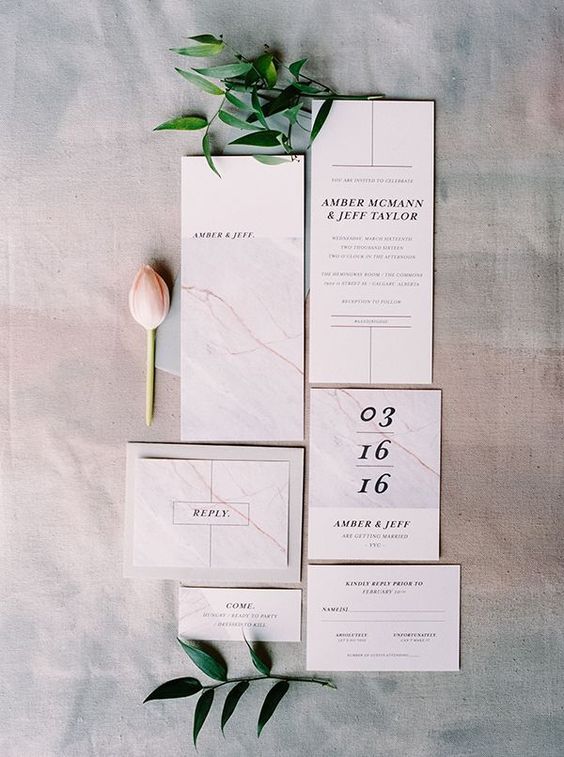
Stationery: Modern Pulp
Wording and verbiage
Now that you’ve got all the vital details covered, it’s time to think about how you want to communicate this to your guests to set the tone for your day!
First, think about the big day itself. How do you want it to look and feel, and what kind of ambience are you trying to create for your guests? If you haven’t already clearly defined your wedding vision, go ahead and do this first.
Once you have defined your wedding vision, tailor your invitation wording to reflect this.
For a more high-end affair, you’ll want to use more traditional language. Think about wording like “we formally request the pleasure of your company” or “the honour of your presence is required”. You’ll also want to include the surnames of your guests, along with their respective titles like Mr, Mrs or even more distinctive titles like Dr.
The same formal language can then be applied to the finer details of your invitations like timings and addresses. For example, outlining your ceremony time as “half past three in the afternoon” as opposed to simply stating “3.30pm”.
If it’s a more relaxed event you have in mind then you can drop the titles and simplify your phrasing with statements like “Please join us” or “We can’t wait to celebrate with you”. Timings and addresses can be stated numerically without having to spell everything out.
Don’t be afraid to inject a sense of humour or something a little quirkier if that reflects who you guys are as a couple! It’s a great opportunity to get creative and let your personalities shine through.
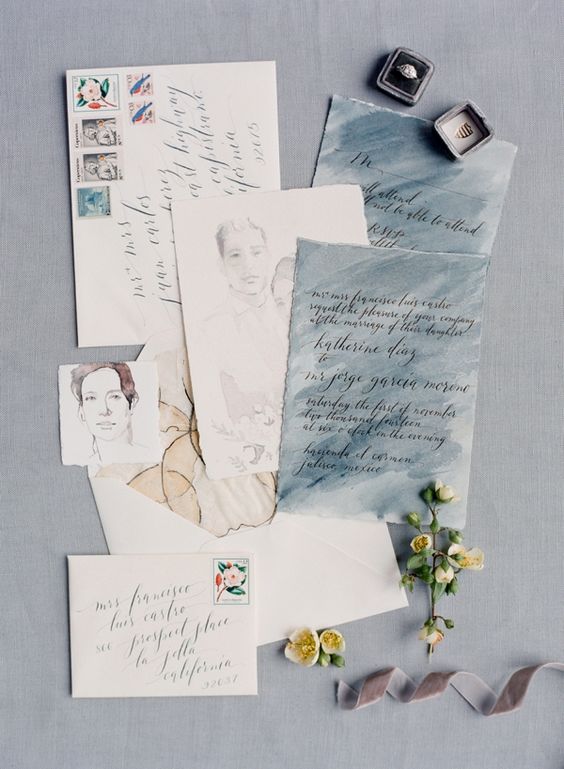
Stationery: Amber Moon Design
Timing
Once you have successfully created your invitations (and triple checked for any spelling errors!) it’s time to get them sent out to your guests! But when is the right time to get the ball rolling?
The timing of your invitations is crucial to allow your guests enough notice to make any necessary travel or child-minding arrangements prior to the day, along with giving you time to track your RSVP’s.
It’s generally recommended to send your invitations out between 6-8 weeks prior to your big day. You might be working with both an A and B guest list, in which case your timing is especially crucial as you’ll be sending out two rounds of invitations. If you need some help working out the logistics of an A and B guest list, make sure you check out our blog post.
If you are hosting a destination wedding then your guests will need to do some additional planning and budgeting to cover flights, accommodation and taking time off work. In this case, send your invitations out around 3 months prior to give them a realistic timeframe.
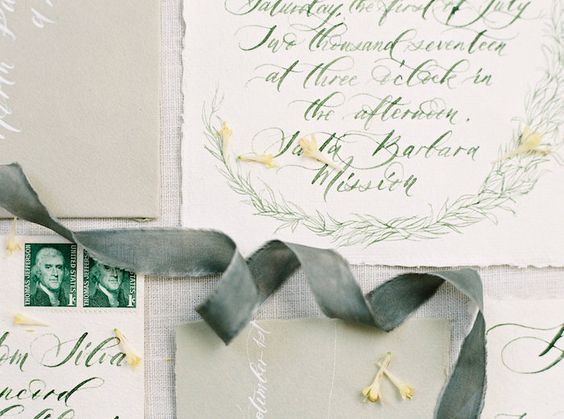
Stationery: Seniman Calligraphy
Embrace the excitement
Sending your wedding invitations is definitely a pivotal moment in your wedding planning process. It signifies that plans are being set in stone, the date is fast approaching, and the countdown is well and truly on!
It’s definitely an exciting moment for both you and your guests, so it’s important to make sure you cover all of the important details while also setting the scene for your dream day.
Using the helpful tips above will ensure you convey the essential information to your guests in the most authentic way possible.
And the best part – once those invitations start rolling out, you now have a bunch of excited guests counting down to the big day alongside you!
